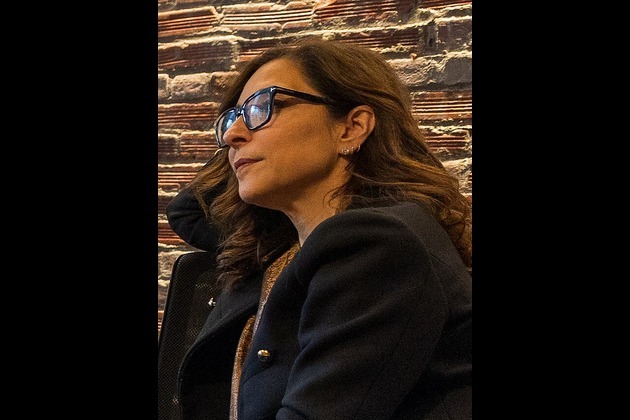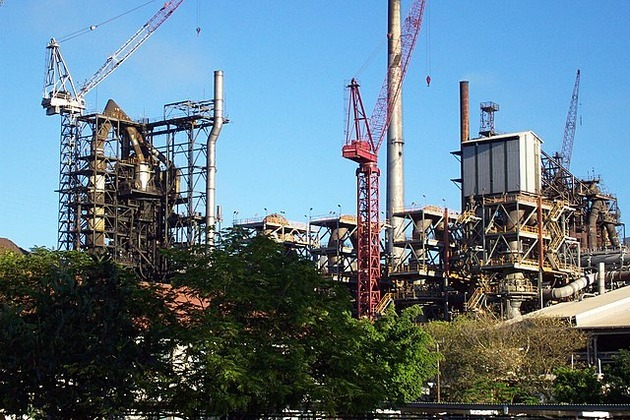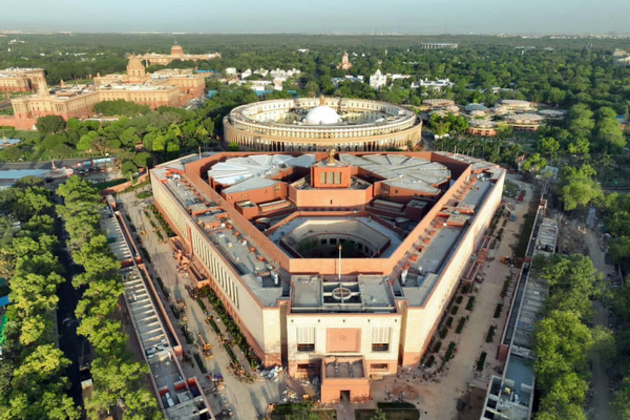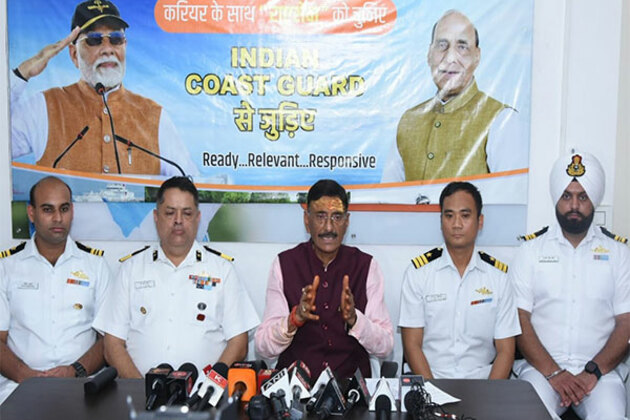Sanction first, ally later: India learns the cost of trusting the US
RT.com
11 Jul 2025, 20:40 GMT+10
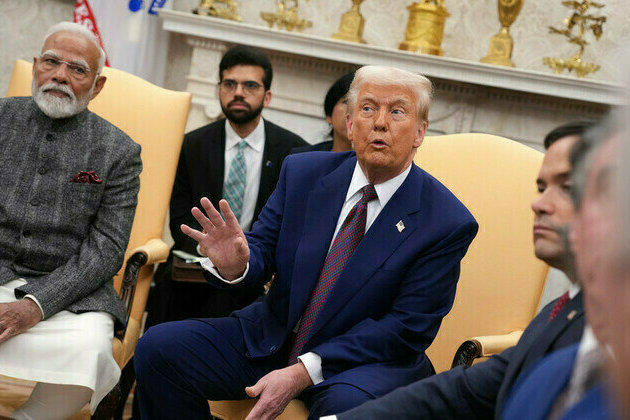
Facing the risk of trade weaponization, New Delhi must defend its economic choices through diplomacy, diversification, and strategic resilience
India stands at a challenging crossroads. A proposed US Senate bill threatening a500% tariffon countries importing Russian oil has cast a long shadow over India's energy security. With nearly half of its oil now sourced from Russia, India could be forced to choose between economic pragmatism and geopolitical alignment.
But is this truly a binary choice? Or does India still have space to maneuver, through diplomacy, diversification, and deeper strategic thinking?
India's oil imports from Russia have been guided by cost and continuity. Since early 2022, Russian barrels, trading$7-8 cheaperthan Middle Eastern crude, have helped India shield its economy from energy-driven inflation. According toICRA's reportcovering April2024 to February2025, India saved approximately $7.9billion on its oil import bill by purchasing discounted Russian crude, a notable increase from $5.1billion in the previous fiscal year.
Yet in Washington, this pragmatic calculus is seen through a geopolitical lens. The draftSanctioning Russia Act of 2025, sponsored by Senator Lindsey Graham, attempts to globalize America's war priorities by punishing countries that don't align with its sanctions regime. For India, however, strategic autonomy has never meant passive neutrality. It means independent policy calibration, guided by long-term national interest, not momentary external pressure.
While New Delhi has publicly avoided direct confrontation, Indian officials have quietly engaged with US lawmakers to explain the rationale behind continued Russian oil imports.Foreign Minister S. Jaishankar'sremark that India will "cross that bridge when we come to it" has drawn varied interpretations, some see it as calculated ambiguity, others as a strategic placeholder. Either way, it reflects a diplomatic posture designed to preserve flexibility amid intensifying external pressure.
India has often purchased Russian oil below the G7-imposed price cap of$60 per barrel, enabling continued access to Western shipping and insurance services. Still, New Delhi maintains that it isnot formally boundby the cap and that its energy trade decisions areguided by national interest, not alignment with unilateral Western sanctions.
As support for the bill gathers momentum in the US Senate, however, India's diplomatic space could shrink, with growing pressure to demonstrateexplicit support for Ukraineor risk facing steep economic consequences. To preempt escalation, India may need to reinforce its position with a combination of strategic messaging, confidence-building gestures, and readiness to adapt, without appearing coerced. That's a fine diplomatic line, but one India is uniquely equipped to walk.
A tariff that ripples beyond oil
The proposed tariff is not merely an energy tool; it's a trade weapon. India's annual exports to the US stand at$80-90 billion. Imposing a 500% levy would cripple major sectors like pharmaceuticals, engineering goods, auto components, and textiles, many of which are indirectly linked to oil-derived inputs.
Analysts caution that a significant portion of India's US-bound exports, particularly in energy-intensive sectors like chemicals, metals, electronics, and auto components, could face disproportionate damage under such a tariff regime.
This raises a critical question: can strategic partnership coexist with economic coercion? If India is penalized for pursuing affordable energy, the credibility of broader India-US cooperation across the Indo-Pacific, defense, semiconductors, and technology fields will be undermined. The risk is that tactical pressure today may erode structural trust tomorrow.
Strengthening energy defenses
India must therefore prepare on multiple fronts. While diplomatic engagement in Washington continues, it must also strengthen internal safeguards to manage potential shocks. This includes accelerating the diversification of oil sources, particularly from Gulf producers and Africa, andexpanding strategic petroleum reserves(SPR), a move already under government consideration. Equally vital is the need to fast-trackthe clean energy transitionto reduce the economy's overall oil intensity and long-term vulnerability.
READ MORE: What just happened in Rio should terrify the West
Legal tools could also be brought into play. India has invokedWTO mechanisms, seeking consultations over US auto tariffs and proposing retaliatory duties on steel and aluminum, steps it has clarified will not disrupt ongoing trade negotiations. Still, any legal response must be tightly calibrated to avoid escalation. Past experience offers caution: the 2016US-India solar panel disputebrought eventual compliance but only limited near-term relief, with India phasing out contested policies years after the initial ruling. WTO adjudication, while principled, often delivers outcomes too slowly to defuse immediate economic pressure.
The balancing act
India's choices today will reverberate not only in Washington, but also in Moscow. Russia has long regarded India as a reliable strategic partner, especially in defense, energy, and space. If India appears to reduce Russian oil imports under US pressure, it could invite consequences: costlier contracts, tighter financing, and diminished leverage in bilateral negotiations. More critically, it could potentially erode the political goodwill that has long anchored their stable ties.
Yet both India and Russia are also keenly aware of the shifting political winds in Washington. With the 2026 US midterms approaching, and uncertainty over the durability of Trump's congressional support, both countries may prefer to buy time rather than rush into irreversible decisions. A potential electoral setback could weaken legislative momentum behind the Sanctioning Russia Act, forcing Washington to recalibrate its tactics.
Reflecting Russia's own caution, Deputy Foreign Minister Sergei Ryabkov noted, "The Trump administration is very contradictory in its actions and statements. This does not make the work easy," in remarks to TASS. For India, this moment may be less about confrontation than about strategic patience, balancing engagement with both powers while safeguarding long-term autonomy.
Yet, continuing to buy Russian oil in defiance of US legislation carries risks for India, particularly for the fragile but deepening India-US partnership. Washington is investing heavily in India's rise through technology transfer, nearshoring, and strategic frameworks like the Quad. The concern is less about immediate sanctions and more about the potential loss of momentum in broader bilateral cooperation.
Strategic autonomy
The 500% tariff threat is more than just a policy lever, it is a litmus test of India's economic sovereignty, diplomatic agility, and global posture. India must defend its energy decisions not with defiance, but with deliberate design: through layered diplomacy, structural reforms, and a clear articulation of its development-driven rationale. In this context, India is not choosing sides; it is choosing its own ground. It seeks to maintain credible relationships with both Washington and Moscow without being pulled into binary alignments. Strategic autonomy, in this sense, is not about isolation, it is about balance, flexibility, and consequence-sensitive positioning.
READ MORE: India is way too eager to embrace Trumps America
If Washington hopes to sustain India as a durable democratic partner, it must recognize that coercive tactics could prove counterproductive, pushing India toward alternative suppliers and geopolitical alignments, including, if necessary, even China, in an effort to buffer against future risks.
If the US sees India as a true strategic partner, not merely a convenient counterweight, it must acknowledge these complexities and demonstrate flexibility. At the same time, if India seeks to rise without external dependency, it must further sharpen its ability to absorb, deflect, and recalibrate in the face of mounting pressure.
(RT.com)
 Share
Share
 Tweet
Tweet
 Share
Share
 Flip
Flip
 Email
Email
Watch latest videos
Subscribe and Follow
Get a daily dose of India Gazette news through our daily email, its complimentary and keeps you fully up to date with world and business news as well.
News RELEASES
Publish news of your business, community or sports group, personnel appointments, major event and more by submitting a news release to India Gazette.
More InformationBusiness
SectionMusk’s X loses CEO Linda Yaccarino amid AI backlash, ad woes
BASTROP, Texas: In a surprising turn at Elon Musk's X platform, CEO Linda Yaccarino announced she is stepping down, just months after...
Ex-UK PM Sunak takes advisory role at Goldman Sachs
NEW YORK CITY, New York: Former British prime minister Rishi Sunak will return to Goldman Sachs in an advisory role, the Wall Street...
Gold ETF inflows hit 5-year high as tariffs drive safe-haven bets
LONDON, U.K.: Physically backed gold exchange-traded funds recorded their most significant semi-annual inflow since the first half...
PwC: Copper shortages may disrupt 32 percent of chip output by 2035
AMSTERDAM, Netherlands: Some 32 percent of global semiconductor production could face climate change-related copper supply disruptions...
U.S. stocks recover after Trump-tariffs-induced slump
NEW YORK, New York - U.S. stocks rebounded Tuesday with all the major indices gaining ground. Markets in the UK, Europe and Canada...
Stocks slide as Trump unveils 25% tariffs on Japan, S. Korea
NEW YORK CITY, New York: Financial markets kicked off the week on a cautious note as President Donald Trump rolled out a fresh round...
Delhi
SectionBirkenstock steps up legal battle over fakes in India
NEW DELHI, India: Birkenstock is stepping up its efforts to protect its iconic sandals in India, as local legal representatives conducted...
Don't think Alonso's scared to drop anyone: Gareth Bale expects "big changes" in Real Madrid under new coach
New Delhi [India], July 11 (ANI): Former Real Madrid star winger Gareth Bale expects new head coach Xabi Alonso to make 'big changes'...
One Nation, One Election Bill does not hamper basic structure of Constitution, need to address grey areas: Former CJIs tell parliamentary panel
New Delhi [India], July 11 (ANI): Former Chief Justices of India JS Khehar and DY Chandrachud gave their views before the Joint Parliamentary...
Indian Coast Guard launches awareness campaign to attract young recruits
Ranchi (Jharkhand) [India] July 11 (ANI): The Indian Coast Guard has launched a nationwide awareness campaign from July 14 to July...
Arunachal Pradesh Governor interacts with SHGs, celebrates Lakhpati Didis as pillars of a 'Viksit Arunachal'
Itanagar (Arunachal Pradesh) [India], July 11 (ANI): Arunachal Pradesh Governor, Lt. General KT Parnaik (Retd.), along with the First...
Sanction first, ally later: India learns the cost of trusting the US
Facing the risk of trade weaponization, New Delhi must defend its economic choices through diplomacy, diversification, and strategic...

